When you talk about saxophones, many people will only think of the four types which are well known. However, there’re many types of saxophone initially invented in 1846 by Belgian called Adolphe Sax. The saxophone’s invention has become very popular for different music styles, including rock, classical, jazz, and marching bands.
The well-known saxophone that you can easily come across includes soprano, baritone, tenor and alto. If you’re wondering if there are some more, then here is a complete list.
Related: 9 Types Of Speakers You Need To Know About
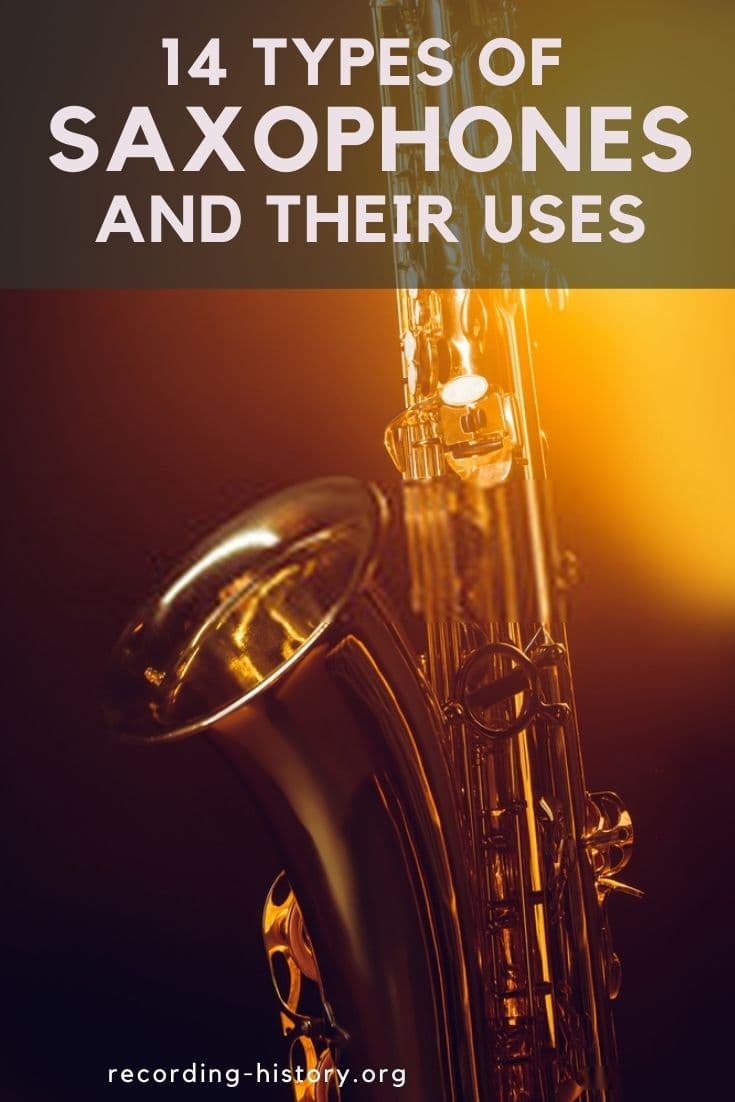
1. The Soprano Saxophone
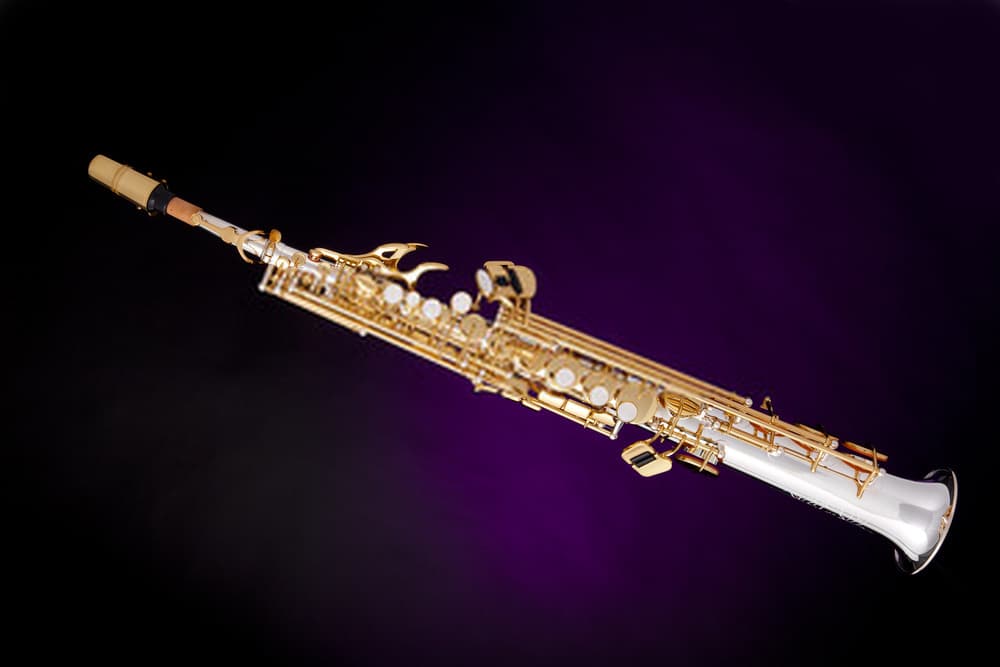
This is the highest-pitched common type of saxophone. It’s a transposing instrument. When you play a C, the actual sound will be a concert pitch Bb because it’s in the key of Bb. Soprano plays a similar range to a Bb trumpet, and it can range from Ab3 to E6, depending on the musician’s ability.
The unique design of the soprano makes it the only saxophone with a straightened out bore. But you can still find some saxophone versions that also contain straightened out bore. The soprano sax is mostly used in smooth jazz since it became popular in the 80s courtesy of Kenny G’s artist.
2. Baritone Saxophone
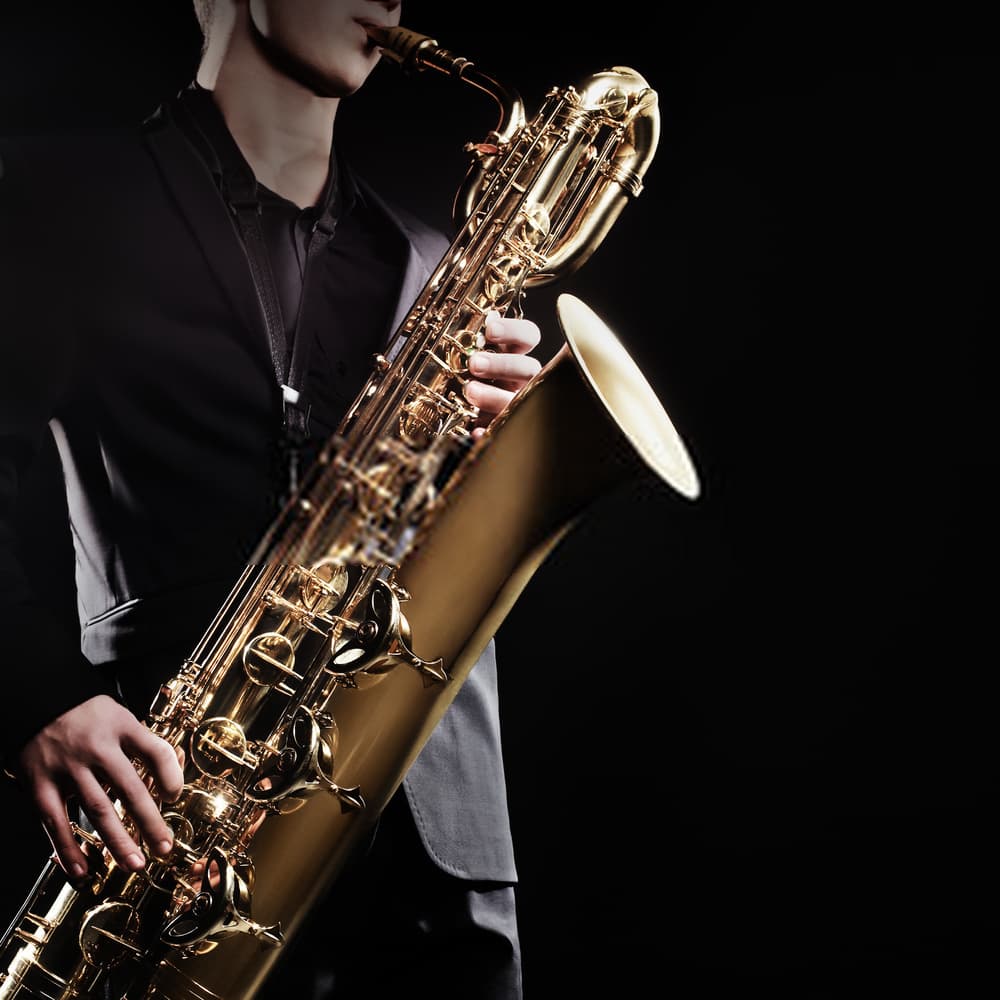
The baritone saxophone is the largest among the first four common types of the saxophone. Bari sax is an Eb instrument which has a much lower tone. Many people don’t like using the baritone saxophone because of its features. Such features include its size, weight and a large amount of air you’ll need to produce sound.
This is the suitable saxophone you need to use if you’re a beginner, although it was also ideal for advanced saxophonists. For you to play it, you’ve to support the weight of this instrument by wearing a harness. The baritone saxophone is most common in music ensembles and solo jazz that requires a deep bass sound.
3. Alto Saxophone
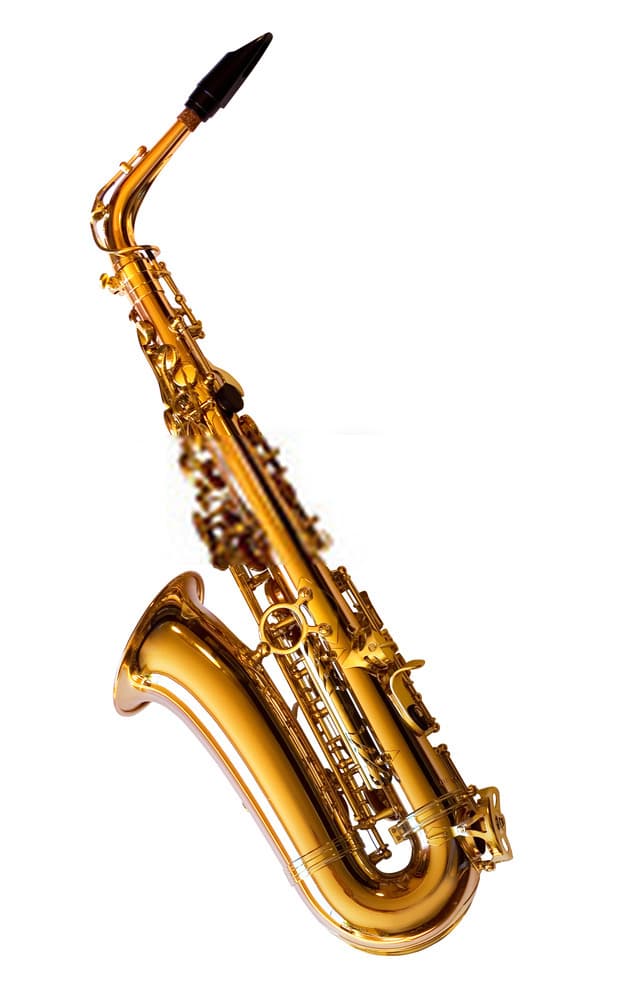
This is the best saxophone for beginners. It’s the most popular saxophone, particularly with student players. Many saxophone players start with an alto saxophone before proceeding to other types of the saxophone. It’s pitched to E flat. It’s small in size and has a small mouthpiece which makes it easy to learn. The younger players don’t find it hard to play an alto saxophone.
Alto saxophone contains similar fingering to all saxophones, making the alto players easily graduate to other saxophone types and develop their skills. You can find alto saxophone mainly in jazz bands.
4. Tenor Saxophone
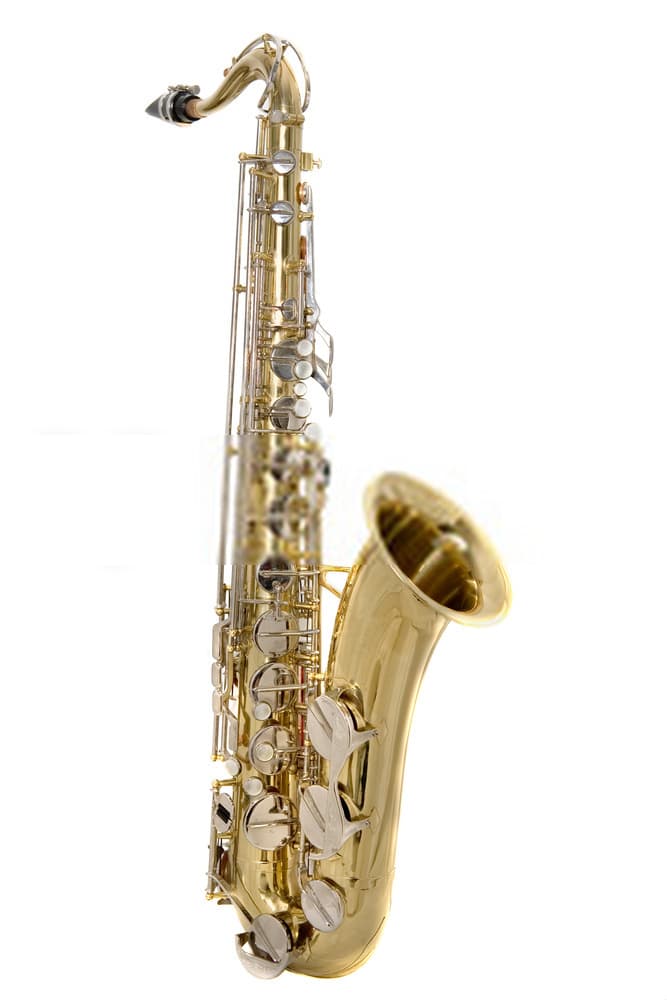
The tenor saxophone is the most famous saxophone. It’s larger than alto and has a lower pitch. It isn’t suitable for beginners. It’s a larger instrument that requires more air to be blown through it to produce sound. Although it’s not common among young players, it’s widely used saxophone in pop, jazz music and rock.
It has the same range as a male singer and contains a darker tone quality, making it a sonic fit for any genre. Most of the saxophone players start with alto and then move up to tenor saxophone to develop breathing and fingering skills.
5. The Sopranino Saxophone
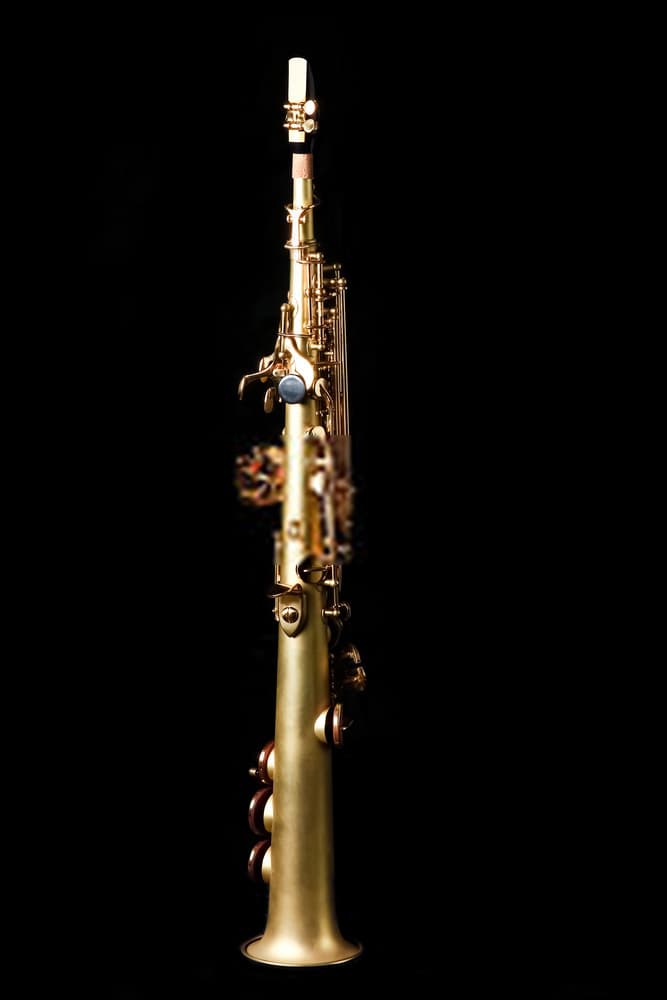
This is the smaller version of the soprano saxophone. It has a higher octave compared to the alto saxophone. You can find sopranino saxophone mostly in film scores, big band recordings and modern classical music. It’s a small type of saxophone that requires some finger dexterity for it to be able to play.
6. C-Melody Saxophone
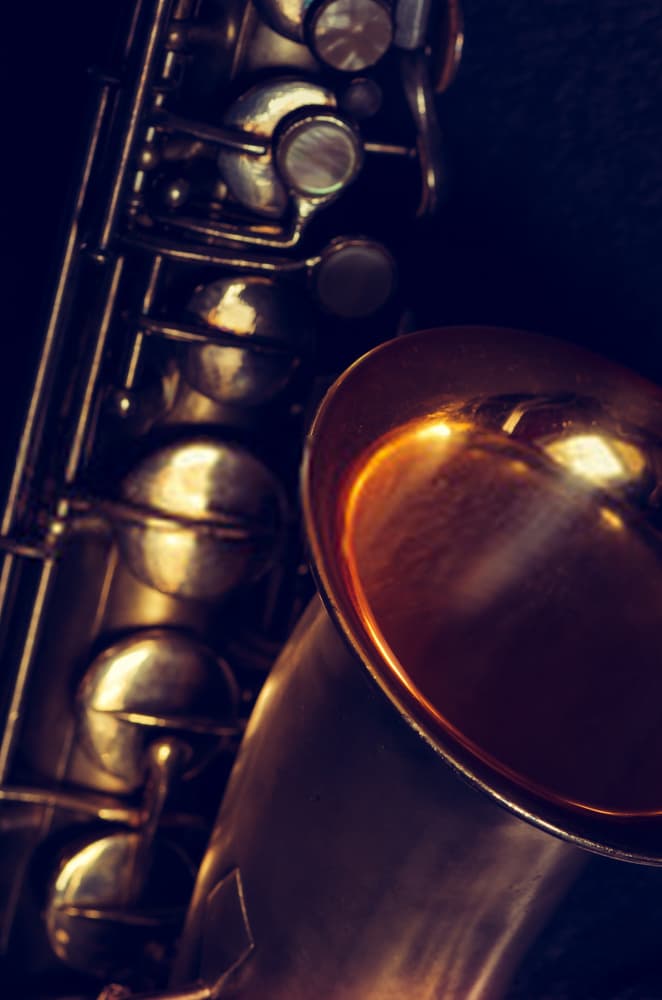
The C melody saxophone is a unique type of saxophone family. It’s the only saxophone that plays at a concert pitch, meaning that when it plays a C, it sounds like a concert C. Early in the 1920s and 1930s, the C melody saxophone was fairly popular; this has changed with time. But you can still hear C melody saxophone from time to time in a trad jazz ensemble.
7. The Bass Saxophone
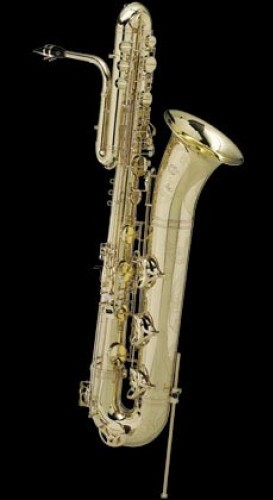
Going bigger with instruments is quite easier than getting smaller with the same instruments, and that’s why you’ll come across bass saxophone. It’s generally big, and that’s why you need to rest it on a stand while playing by using the neck curving down to its halfway body.
It’s perfect for concert bands and larger jazz ensembles because of the full pitched octave below the tenor saxophone, giving it a rich supporting sound.
8. The Contrabass Saxophone
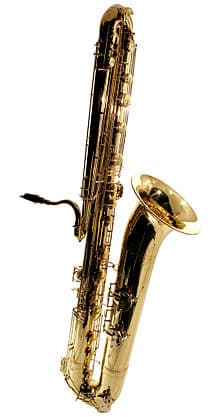
Saxophones are getting bigger every day. There are contrabass and subcontrabass saxophones, massive saxophones that stand at around 6 feet and 4 inches and 7 feet 5 tall. Contrabass is pitched a full octave below baritone, while subcontrabass is an octave below the bass saxophone.
These versions of saxophones are composed of very little material and are mostly seen as collectable items. However, there’re quality versions from famous manufacturers such as Conn. Contrabass is believed to be not part of the Adolphe Sax invention. But that’s no longer the case because it was also part of the original saxophone family.
9. Sopranissimo Saxophone
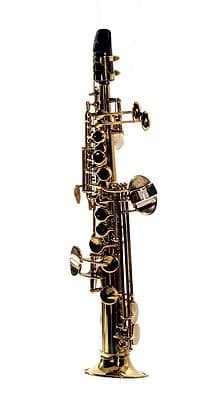
This is the smallest member of the saxophone family. It’s pitched in Bb, one octave above soprano saxophone. Building it proves to be difficult since it’s 30cm long, 33 cm with the mouthpiece. A true sopranissimo saxophone was produced in the mid-2010s. This saxophone is extremely small. It requires saxophonists to be very focused because it’s difficult to play.
Sopranissimo is more expensive than common saxophones because of its low demand, which reduces its economic scale. This type of saxophone is not suitable for beginners. The keywork of this saxophone only extends to a written Eb6 instead of G like other saxophones. You have to place it on the mouthpiece.
10. Bass Saxophone
It’s one of the largest members of the saxophone family. It’s a transposing pitch in Bb, an octave below tenor saxophone. Bass saxophone is not commonly used, but you can find it in jazz recordings, occasional concert bands, and free jazz. Bass saxophones in C were originally for orchestral use, but the modern ones are in Bb, which puts them perfectly fourth below baritone and an octave lower than tenor.
In bass saxophones, music is written in treble clef, just like other saxophones. The bass has pitches sounding two octaves and a major second lower than written, which isn’t the case with other types of the saxophone.
11. Tubax Saxophone
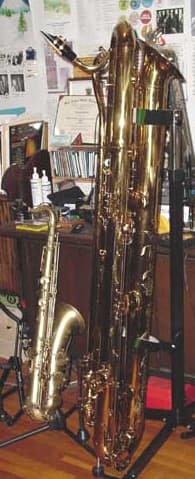
This is a more modified saxophone developed by a German instrument maker called Benedikt Eppelsheim in 1999. Tubax exists in both Eb contrabass Bb. It also exists in subcontrabass sizes. The first size of tubax was the Eb contrabass. It shares the same registration with the contrabass saxophone, although it’s much more compact because of its tubing when folded more times.
The timbre of the Eb proves to be more focused and compact than the full-sized contrabass saxophone, but it can still blend well with other saxophones. You can still play it with surprising agility compared to its size. Subcontrabass tubax also uses the mouthpiece of the baritone saxophone.
Tubax saxophone has a bore that isn’t wide like other sizes of saxophones. It also has very thin tubing as compared to other saxophones. Tubax saxophone’s sound is a little bit honkier than the average saxophone.
12. Mezzo Soprano Saxophone
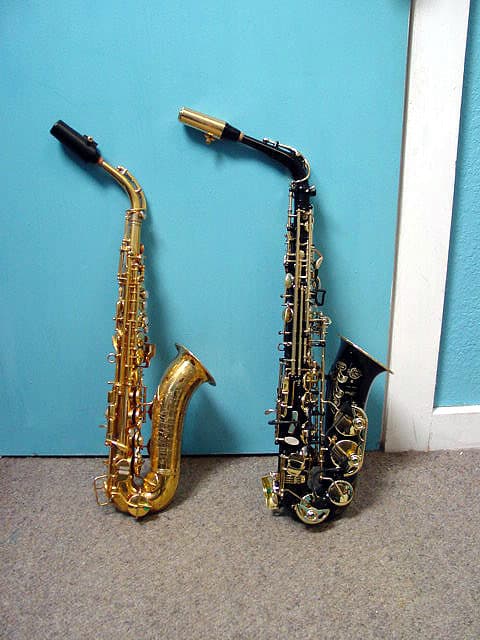
You can sometimes call it the F alto saxophone. It’s an instrument in the saxophone family that’s in the key of F. It’s pitched a whole tone above the alto saxophone. It shares a similar size and sound with alto, although its upper register sounds more like a Bb soprano. Mezzo-sopranos exist in few numbers. C.G Conn Company produced them in 1928 and 1929.
Mezzo-soprano is the only saxophone pitched F, apart from some few prototypes of an F baritone saxophone.
13. Connosax Saxophone
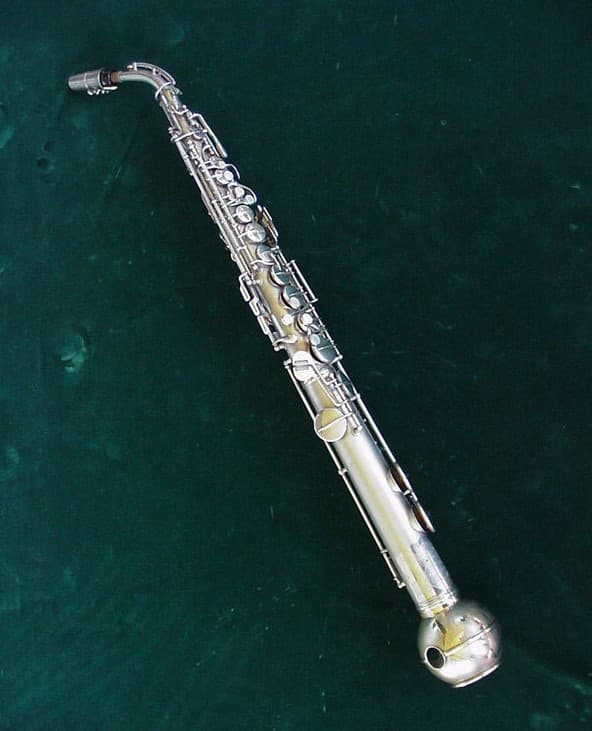
Connosax is a rare saxophone that’s not readily available in the market. It’s a straight-conical bore instrument in F with a slightly curved neck and spherical bell. Connosax combines both saxophone bore and keys with a bell-shaped, similar to that of a heckelphone.
It imitates the timbre of the English horn. Connosax was produced in the year 1929 and 1930, respectively. It had a key range from low A to high G. Connosax saxophones are very few in and are eagerly sought after by collectors.
14. Saxello Saxophone
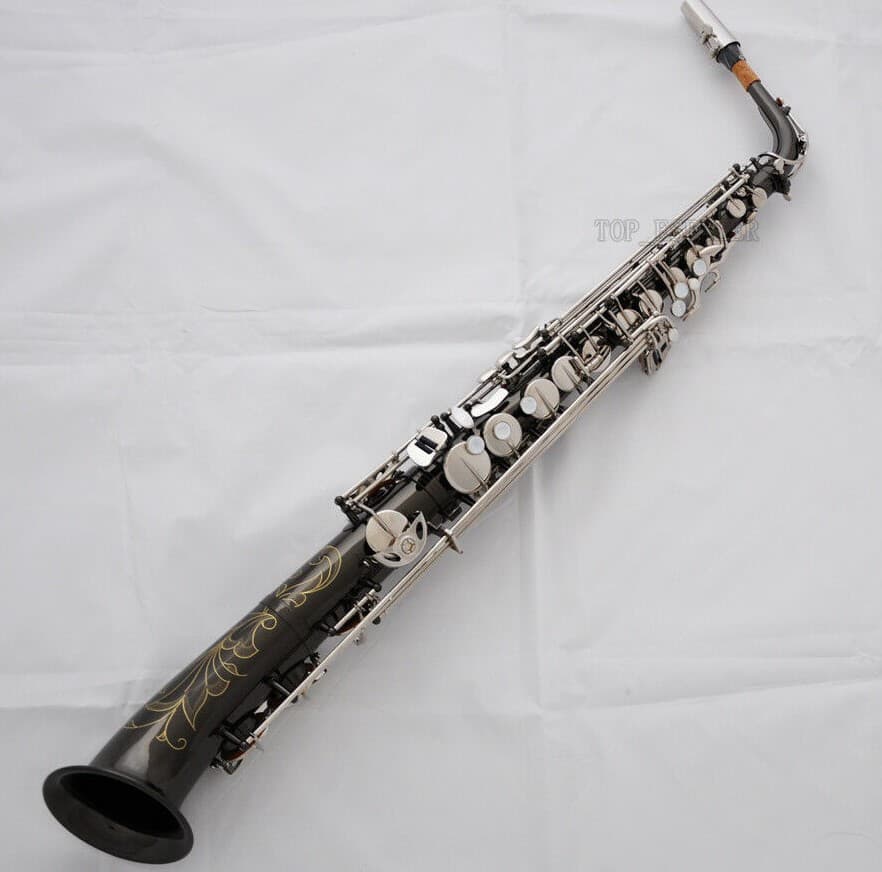
If you’re looking for marvelous and boutique saxophones, then try out saxello. It has a tonal structure that is exquisite and versatile. This saxophone allows you to mold the sound palette to create your voice. It has an excellent intonation that enables you to be noticed with the beautiful black nickel-plated.
When playing, the keywork is fast, smooth and comfortable. The keywork design is just in the right place with the correct angles and shapes for your hands and fingers. It has a tilted bell that can give you better feedback as a player. The tilted bell also helps the player to mold and articulate their music and perform better.
Anatomy of Saxophone
The saxophone consists of four major parts: the removal neck, the body, the bow, and the bell.
The Neck
The neck is cone-shaped and plays an important part in the total acoustic result. It’s also called the crook. It connects the mouthpiece to the body of the saxophone. Its design enables it to fit inside the saxophone’s body on one end, where a screw is used to hold it at the top of the body.
The Body
The body is the brass tube that allows the air to pass through as it blows. It has all the keys, rods and pads that you use to change the note’s pitch that sounds. Depending on your type of saxophone, you can have a straight body or a curve at the bottom.
The Bow
The bow is the low curving part that connects the body to the bell. It’s a sensitive part that requires delicate design for the production of low notes. It’s the most common part of the saxophone that you can easily dent, so you’ve to be careful when carrying your horn around. It can have a drastic effect on your saxophone’s playability and intonation, hence making it less fun to play when you dent it.
The Bell
This is the flared part that you see at the end of your horn. It has a few keys that play lower notes, but the main function is to project the sound from the horn and stabilize the note. When making a purchase, consider which kind of bell you want. Saxophone models contain different sizes of bells.
The Keywork
The keywork includes all the primary pieces constituting the keys, side keys, spatulas, and features like the rods, allowing them to work.
The Mouthpiece
The mouthpiece is one of the most important parts of a saxophone when it comes to tone quality. The mouthpiece is the part of the saxophone that goes into the mouth of musicians, so it’s where you can generate the sound by blowing into it. Mouthpieces are commonly made of hard rubber materials. You can also find some made of metal, plastic, glass, wood and crystal.
The Reed
Saxophones are simply a single reed instrument. Reed is a piece of wood that is usually bamboo that sits on top of the mouthpiece and can blow over as a musician. It’s the part that makes the sound when you blow into the mouthpiece. It causes the reed to vibrate and create the sound.
How Do Saxophones Work?
Saxophonists provide airflow at a pressure above that of the atmosphere. This atmosphere is the source of power input to the instrument but is a continuous rather than vibratory power source. There’s a production of sound by an oscillating motion—the reed acts as an oscillating valve in the saxophone.
The reed cooperates with the resonances in the air in the instrument to produce an oscillating component of both flow and pressure. Some of the air is radiated as a sound out of the bell once the air in the saxophone starts vibrating. A large amount of energy is lost due to friction with the wall. The resonances then determine the playing frequency and then the pitch. As a player, you can choose the desired resonances using your suitable combination of keys.
How to Choose a Saxophone Size
When choosing a saxophone size, ensure you look for a mouthpiece that suits you because mouthpieces are interchangeable. This makes most of them fit any neck. You can even replace or shave the cork if the mouthpiece is too tight or loose. If you’re a beginner, you need to start with a standard mouthpiece with 2.5 reed and then practice the basics of playing long tones.
Ensure you get the shape and action of the mouth and lips that control the sound using the muscles around your mouth. Also, consider the thickness of the reed when choosing a saxophone. You can express reed thickness with a number. The lower the number on the reed, the thinner the reed. The higher the number, the thicker the reed. Remember that the thickness of the reed affects the tone and how easy and difficult the saxophone is to play.
What is the Most Popular Saxophone?
There’re many types of saxophones. The most popular ones include soprano, alto, tenor and baritone. They’re commonly used in big bands. They’re also the easiest models of saxophone and very easy to play.
Which Saxophone Is Best For Jazz?
There’re many overwhelming types of saxophones when you want to buy them for jazz or upgrade your horn. You can either buy a vintage steeped in jazz history or buy a brand new saxophone for your jazz built with modern manufacturing methods. In the old days, saxophonists could use any saxophone they came across, but that has changed since the emergence of Bb tenor sax.
Tenor sax is the best choice for the voice of jazz. Bb tenor has a good range and a loud sound as compared to the types of saxophones. However, other kinds of saxophone that have become predominant since the appearance of jazz include Eb alto, the central piece of music ensemble.
The Eb alto and Bb tenor are the main ruling kings of jazz, so it’s upon you to decide on which one of these two you want to play.
What Are The Four Main Kinds Of Saxophone?
The four main kinds of saxophone include soprano, alto, tenor and baritone.
Which Saxophone Is The Hardest To Play?
The hardest saxophone to play is the soprano saxophone.
Does Saxophone Damage Your Teeth?
Playing the saxophone can indeed damage your teeth. Many musicians playing saxophone experience problems in their teeth because they exert too much pressure on their lower lip and teeth to support the weight of the saxophone. This can lead to teeth misalignment, especially if you play the saxophone extensively.
Also, if you’re a brass instrument player, you need to be more careful because using such instruments for a long time can cause tooth mobility. You can also experience dental problems.
Conclusion
Many different types of saxophones exist, and each of them has its qualities. However, there are four saxophone types that are commonly used in contemporary music, as mentioned earlier. Be aware of every saxophone in the market and only choose the best after trying a few of them.




